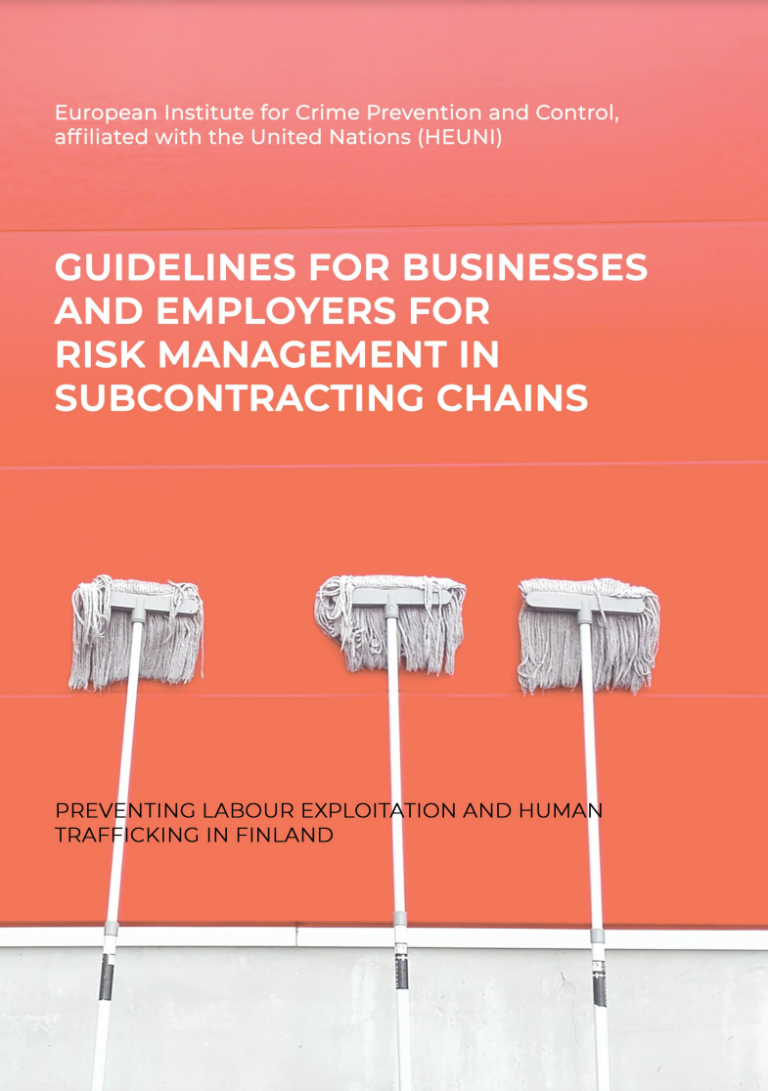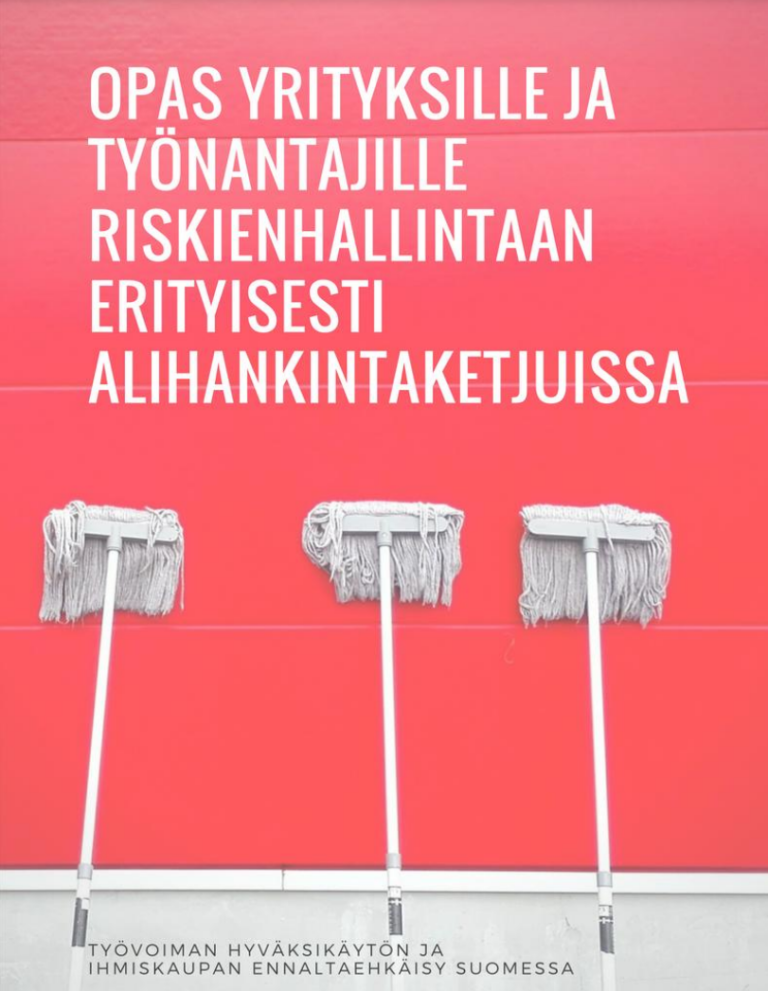The purpose of this guide is to give companies a brief overview on the risks of labour exploitation and demonstrate how the involvement in such scenarios can be avoided. The content is intended to be used as an information and risk management tool, which can help to promote ethically defensible enterprise that respects human rights.
Even though the content is somewhat geared towards the Finnish context, any company that is or may become involved in labour exploitation, one way or another, can make use of the guide. It also features checklists, which contain various measures with which companies are able to reduce the risk of exploitation, especially in subcontracting and production chains.
This guidance is always available in Finnish and Swedish.



